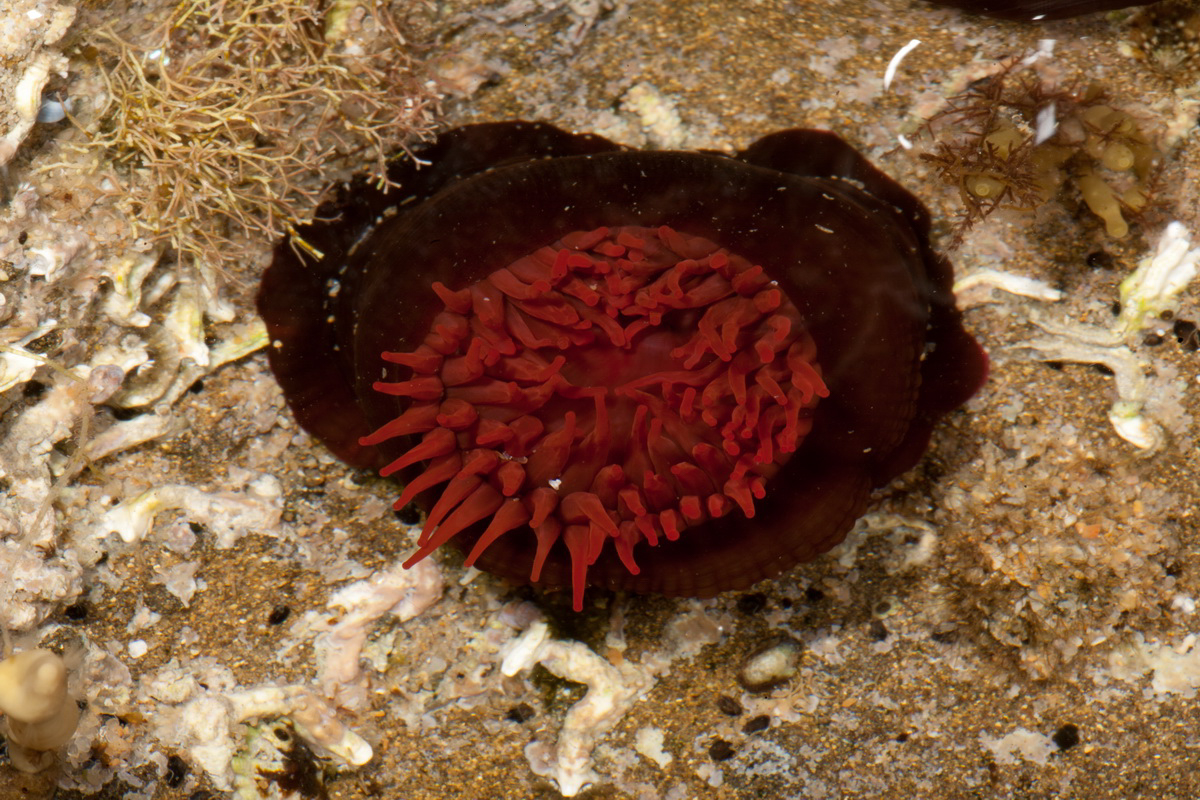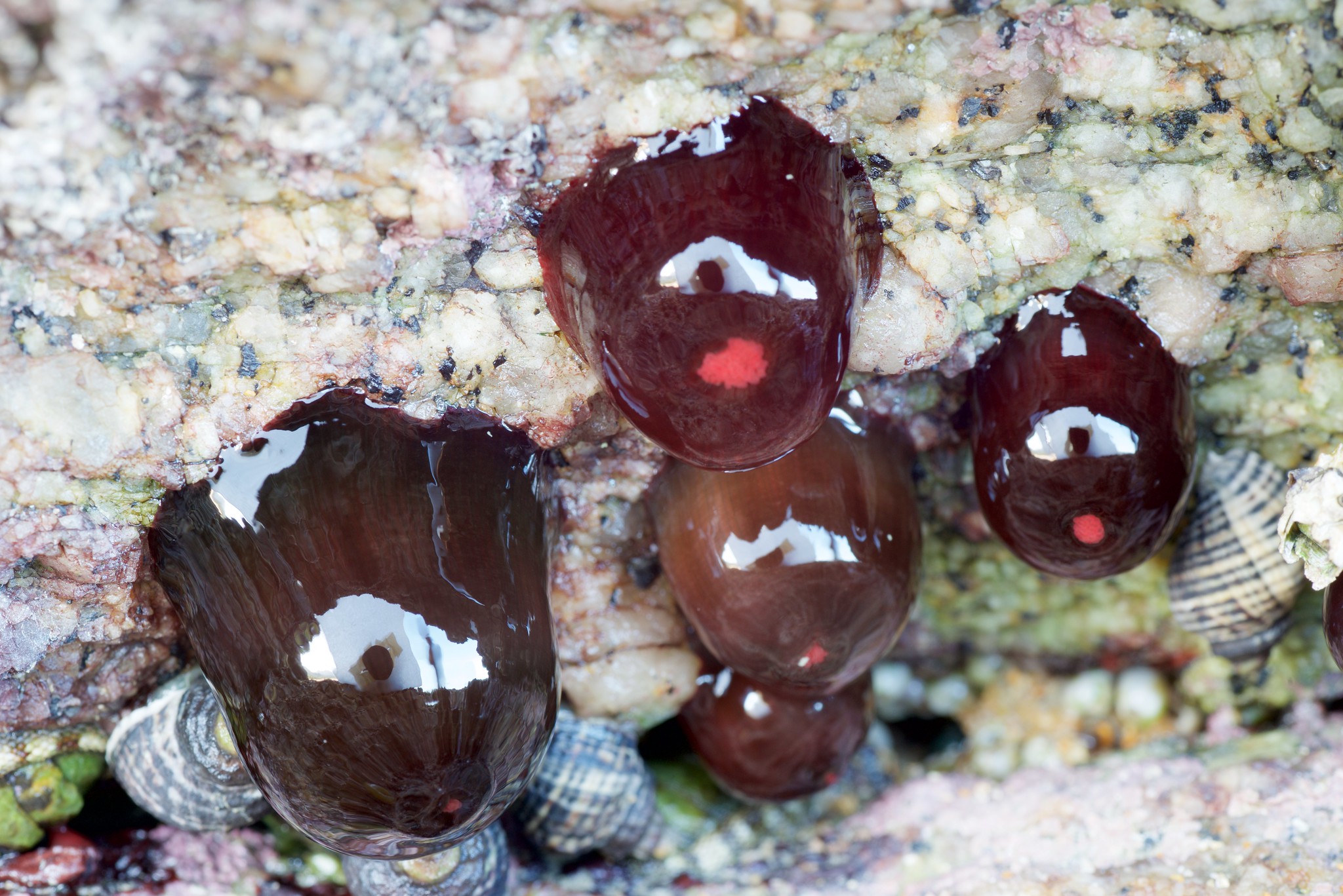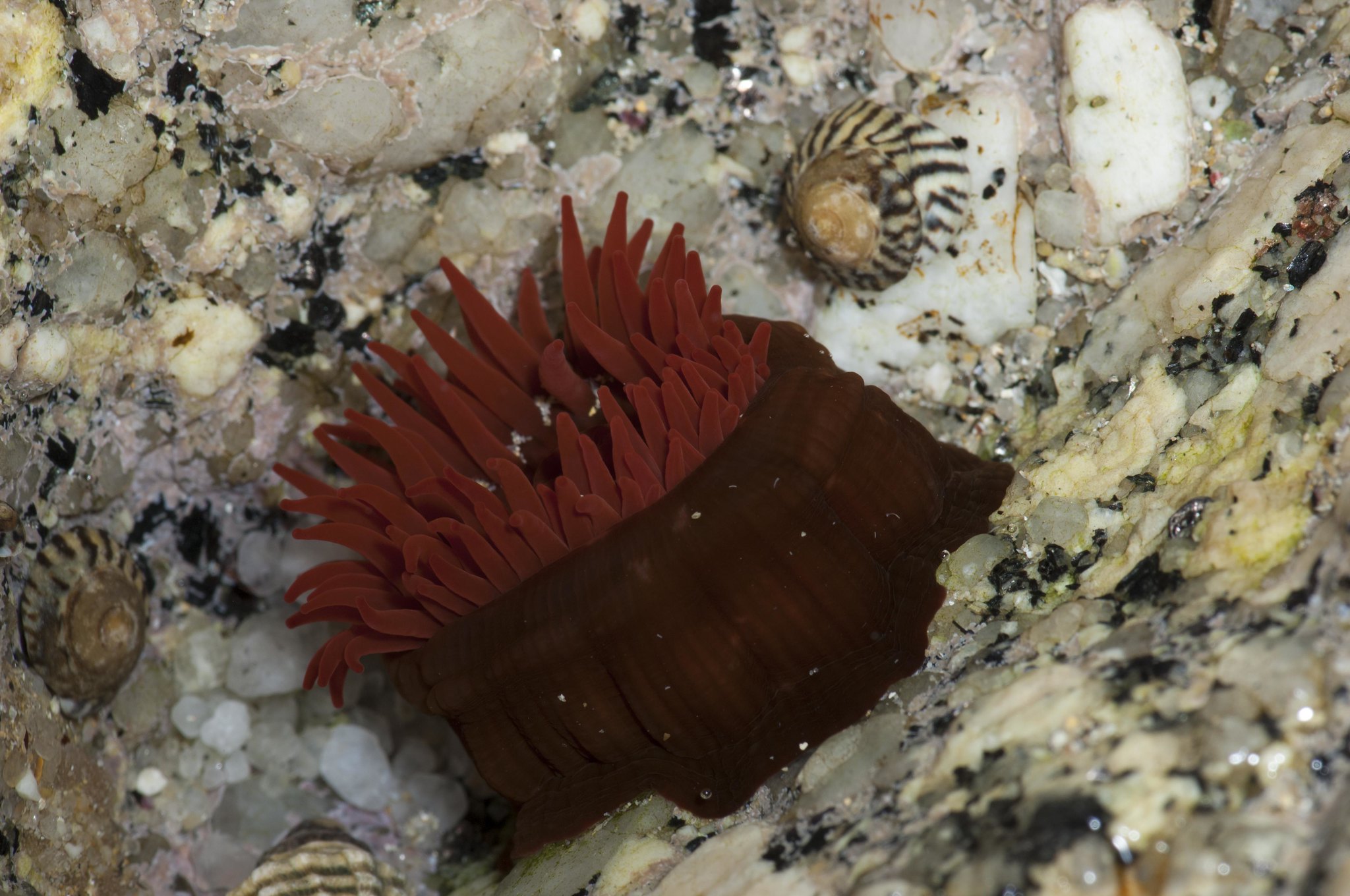Size
40 mm
Field Guide
Improve your identification skills. Download your Waratah Anemone guide here!
Flower-like invertebrate that has many long tentacles surrounding a central mouthpart which is attached to a hard surface. These specialised fighting tentacles come from the acontia, which appear as white spots on the top of the column. At low tide or when disturbed, the tentacles retract and the anemone looks like a round blob of jelly. They range in colour from bright red, reddish-brown to dark purple.
Their tentacles contain hundreds of stinging cells called ‘nematocysts’ which the anemone uses to sting and immobilize their prey, and to do battle with other unrelated anemones. These are the same cells that give Blue Bottles their sting although most anemone species cannot penetrate human skin.
40 mm
Improve your identification skills. Download your Waratah Anemone guide here!

Search area for 30 minutes and record the following:
Abundant: found easily with little searching
Frequent: found with minimal searching
Rare: only 1 or 2 individuals found with intensive searching
Not found: not present during search
Waratah Anemones are affected by coastal development which can increase the amount of solids and pollution in the water affecting their feeding habits and body condition. Increasing water temperature as a result of climate change will likely affect their abundance and cause a southward shift in their distribution.increasing stress due to ocean acidification which can weaken their calcium carbonate shells and reduce body condition. This makes them more prone to disease, predation and low reproduction. Increasing water temperature as a result of climate change will likely affect their abundance and cause a southward shift in their distribution.


Two other types of anemones are commonly found in intertidal areas, Green Anemone and Sand Anemone.
Green Anemones are bright green, olive or brown in colour and also live on hard surfaces.
Sand Anemones are clear to light brown or green in colour and often have horizontal bands on their tentacles. They live only in sand (not on rock) and are often covered in sand or grit.